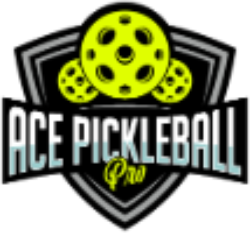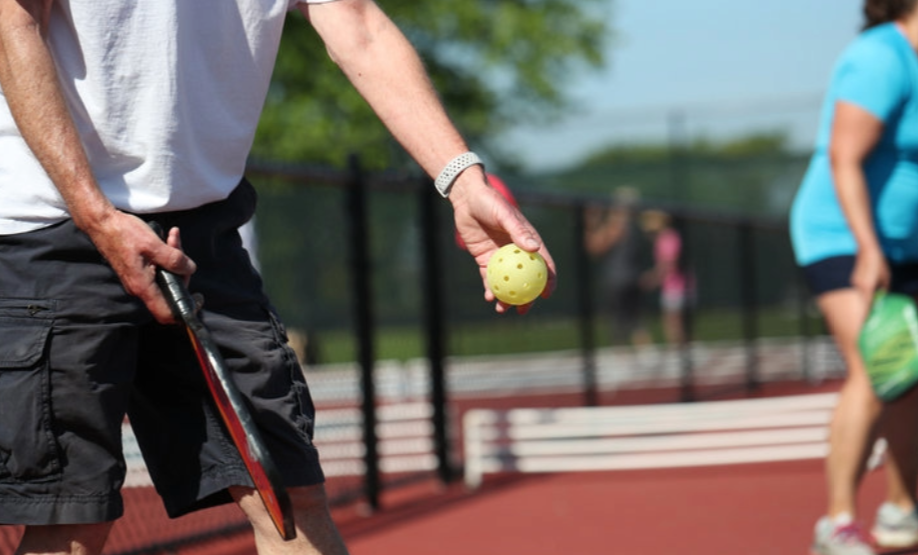If you’re looking for a fun, fast-paced sport that’s easy to learn and great for all ages, then pickleball might just be the perfect fit for you. This exciting sport has been growing in popularity in recent years, and it’s not hard to see why. With simple rules, a small court, and a lightweight ball, pickleball is easy to pick up but challenging to master. But what is the best way to play pickleball?
To answer that question, it’s important to understand the basics of the sport. Pickleball is a racket sport that combines elements of tennis, badminton, and ping-pong. It’s played on a small court with a net in the middle, and players use paddles to hit a plastic ball over the net. The game can be played as singles or doubles, and the first team to reach 11 points (with a two-point lead) wins the game.
So, what’s the best way to play pickleball? The answer will depend on your skill level, playing style, and personal preferences. However, there are some general tips and strategies that can help you improve your game and have more fun on the court. Whether you’re a beginner or a seasoned player, read on to discover some of the best ways to play pickleball.
Take a look at the vibrant scene of a pickleball game in action, where players of all ages come together to enjoy this fast-paced and inclusive sport.
Understanding the Basics
Before diving into the best way to play pickleball, it’s important to understand the equipment and court layout. Pickleball is played with a paddle, a plastic ball with holes, and a net. The court is similar in size to a doubles badminton court, measuring 20 feet by 44 feet.
The net is hung at 36 inches on the ends and 34 inches in the middle. The court is divided into two equal halves by the net, and each half is further divided into two service courts and a non-volley zone. The non-volley zone is also known as the “kitchen” and extends 7 feet from the net on either side.
The basic rules of pickleball are simple and easy to understand. The game starts with a serve, which must be hit underhand and land in the opponent’s service court. The ball must bounce once on the serve and once on the return before players can hit it in the air. This is known as the “double bounce rule.”
After the double bounce, players can either hit the ball in the air or let it bounce before hitting it. The objective is to hit the ball over the net and into the opponent’s court without committing a fault. A fault occurs when a player hits the ball out of bounds, into the net, or fails to hit it over the net.
Points are scored when the opponent fails to return the ball or commits a fault. Games are played to 11 points, and the winner must win by two points. The non-volley zone, or kitchen, is a critical area in pickleball and has specific rules governing when players can enter it. Players cannot hit the ball while standing in the non-volley zone, and they cannot step into the kitchen to hit a ball unless it has bounced first.
Understanding the basics of pickleball is essential to playing the game well. By familiarizing yourself with the equipment and court layout and learning the basic rules and scoring, you’ll be well on your way to becoming a skilled pickleball player.
Mastering Pickleball Techniques
To become a skilled pickleball player, mastering the various techniques involved in the game is crucial. This includes serving, returning, volleying, dinking, the third shot, lobbing, and implementing effective pickleball strategies, as well as mastering the backhand, forehand, groundstrokes, and volleys. Here are some targeted tips to elevate your game.
Serving and Returning
The serve sets the tone for the entire game, making it one of the most crucial shots in pickleball. To enhance your serve, concentrate on three main aspects: your grip, stance, and swing. Ensure you’re holding the paddle comfortably, standing with feet shoulder-width apart, and executing a smooth, controlled swing. For returning a serve, position yourself effectively by anticipating the ball’s trajectory, keep your focus on the ball, and employ a quick, controlled stroke for the return.
Offensive and Defensive Strategies
A proficient pickleball player must excel in both offensive and defensive plays. On offense, aim to hit the ball with both power and precision. A mix of groundstrokes, volleys, and dinks can keep your opponent guessing and off-balance. Defensively, the goal is to return the ball over the net and keep it in play. This requires excellent footwork to position yourself optimally and readiness to move swiftly in response to your opponent’s shots.
Success in pickleball hinges on a comprehensive understanding of its strategies. Know when to ramp up the aggression and when a more defensive play is called for. Exploit your opponent’s vulnerabilities to gain the upper hand, keeping them constantly on the move. Remember, pickleball is as much a game of finesse as it is of power; sometimes, a gentle shot or a well-placed lob is the key to outsmarting your opponent.
Playing the Game
Pickleball offers two distinct formats of play: singles and doubles, each with its own set of strategies and challenges.
Singles vs. Doubles
In singles play, the game is a one-on-one encounter where you’re responsible for covering the entire court on your own. This format demands quick reflexes and good endurance as you’ll need to move swiftly across the court to return shots. Doubles play, on the other hand, involves teaming up with a partner to face two opponents. While the court coverage per player is reduced, successful doubles play requires excellent communication with your partner and strategic coordination of shots to dominate the game.
Court Positioning and Movement
Effective court positioning and movement are crucial elements of pickleball. Your goal is to position yourself in a manner that maximizes your ability to cover the court and make impactful shots. In doubles, coordinating with your partner to cover the court efficiently is key, aiming to leave no open gaps for opponents to exploit.
A critical aspect of court positioning is managing the non-volley zone, or the “kitchen.” Since players are prohibited from volleying the ball while standing in this zone, positioning yourself just outside the kitchen enables you to make volleys effectively without committing a fault.
Moreover, your positioning in relation to the baseline and sidelines is vital for both offense and defense. Ideal positioning allows you to execute strong shots while being in a good stance to move and cover the court as needed. This level of court awareness demands excellent footwork and agility, highlighting the importance of mobility in pickleball.
By understanding these aspects of singles and doubles play, along with mastering court positioning and movement, players can significantly improve their performance and enjoyment of the game.
Advanced Pickleball Skills
As you progress from a beginner to an experienced pickleball player, refining advanced skills becomes paramount for dominating the court.
Strategic Shot Selection
Mastering strategic shot selection is crucial. It involves discerning the perfect moments to transition between offense and defense based on your opponent’s play. By accurately reading and anticipating their shots, you can position yourself for optimal responses. On the offense, target the court’s corners with fast, spin-laden shots to complicate your opponent’s returns. Defensively, prioritize control and aim for low, central shots to afford yourself more reaction time and disrupt your opponent’s rhythm.
Mental and Physical Game
Pickleball demands as much mental prowess as it does physical skill. Maintaining focus, patience, and composure, especially under pressure, minimizes unforced errors. Visualizing your shots in advance can sharpen your focus, while breathing exercises may enhance calmness and concentration.
Your physical game is equally important. Regular practice and tailored drills can significantly improve your footwork, speed, and agility, essential components for advanced play.
Above all, perseverance and a willingness to learn from mistakes are key. Advanced skills in pickleball are honed over time, through consistent practice and strategic gameplay. Keep a positive attitude, remain patient with your progress, and your efforts will lead to improved performance and enjoyment of the game.
Equipment and Apparel
Having the correct equipment and apparel is essential for enhancing your performance and enjoyment in pickleball. Let’s delve into the specifics of what you’ll need.
Choosing the Right Paddle and Balls
The paddle is paramount in pickleball. When selecting one, you should evaluate its weight, grip size, and the size of its sweet spot. Heavier paddles offer more power, while lighter paddles afford greater control. The grip must feel comfortable in your hand, with sufficient traction to prevent slippage, and the sweet spot should be ample for consistent ball contact.
Pickleball balls are akin to wiffle balls but are built for durability. Available in various colors, the choice often boils down to personal preference. Ensure any balls you purchase are USAPA approved, affirming they adhere to official standards.
Proper Footwear and Clothing
Choosing the right footwear is critical for pickleball, as the game involves quick, lateral movements. Shoes designed specifically for pickleball, featuring non-marking soles to protect the court surface, can offer the necessary traction and support. Comfort and fit are vital, as you’ll be on your feet for extended periods.
When it comes to clothing, opt for materials that are breathable, moisture-wicking, and lightweight. Fabrics like polyester, nylon, and spandex are excellent options, facilitating ease of movement and keeping you cool. Avoid cotton and wool, which tend to retain moisture and can weigh you down.
By selecting the appropriate paddle, balls, footwear, and clothing, you’ll be well-prepared to engage in pickleball, ensuring both performance and comfort are optimized.
Conclusion
Pickleball, with its unique blend of simplicity and depth, offers a delightful sporting experience that caters to enthusiasts of all ages and skill levels. From understanding the fundamentals and equipment essentials to mastering advanced techniques and strategies, this comprehensive guide aims to equip you with the knowledge and insights needed to excel in the game. Whether you’re a novice just discovering the joys of pickleball or an experienced player looking to refine your skills, embracing the principles outlined will undoubtedly enhance your gameplay and enjoyment of this rapidly growing sport.
As you continue on your pickleball journey, remember that the essence of the game lies in the joy of play, the spirit of competition, and the camaraderie among players. With the right equipment, a commitment to improvement, and a positive attitude, you’re set to enjoy and succeed in pickleball. Keep practicing, stay focused on your goals, and most importantly, have fun on the court. The world of pickleball awaits your participation and contributions to its vibrant community.

